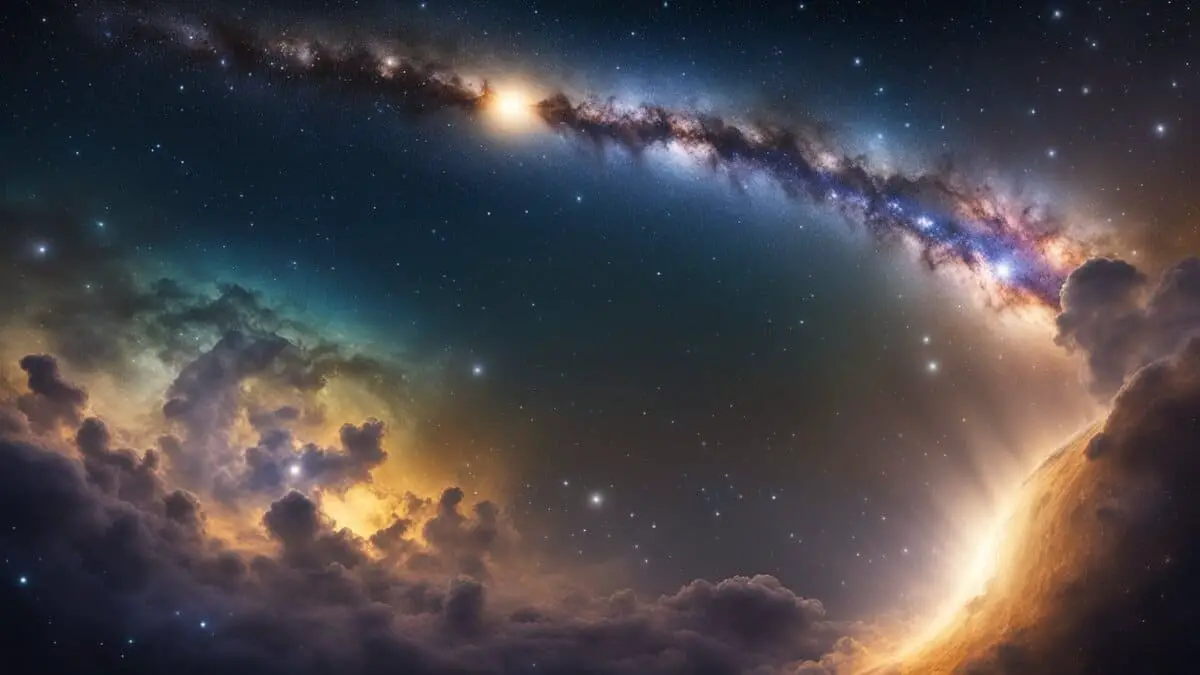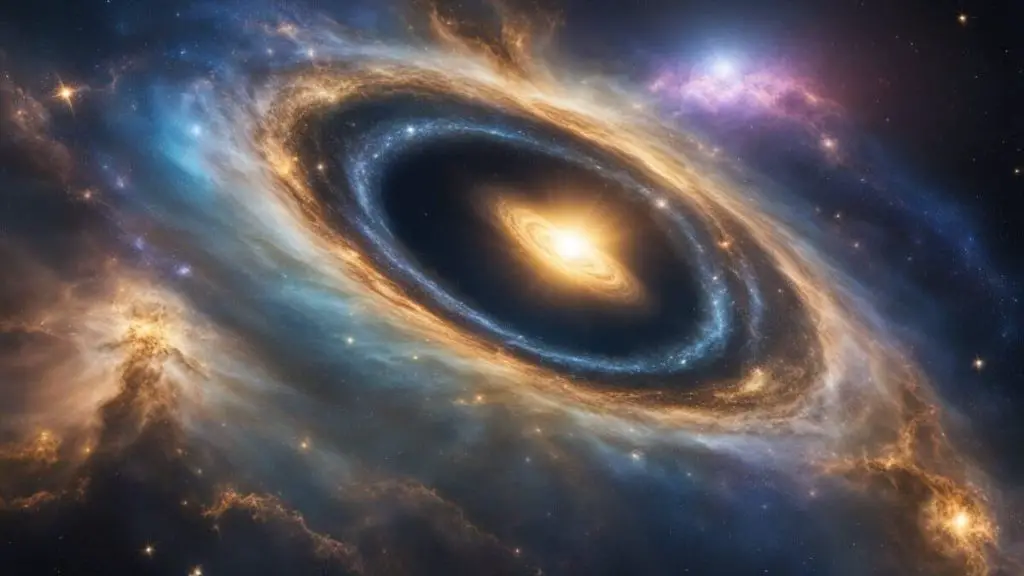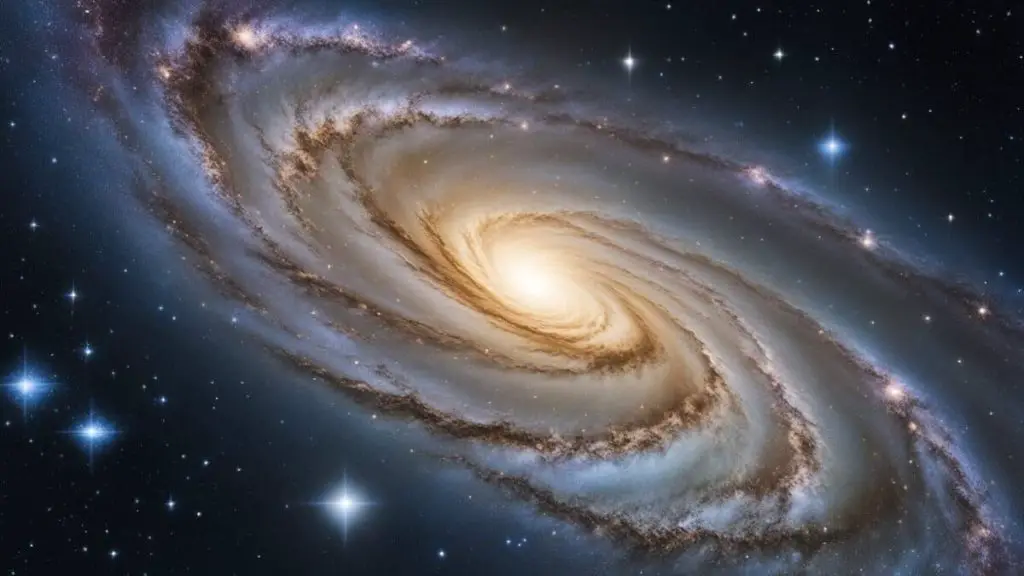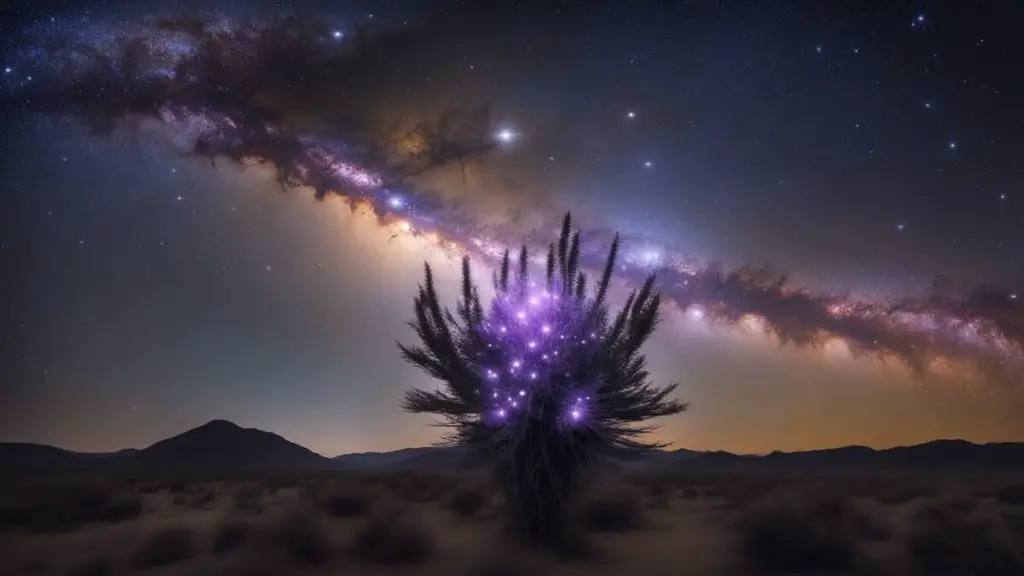You’re intrigued by the stars, especially when identifying the largest one in our galaxy. With its vast expanse, the Milky Way holds secrets to some of the most gigantic stars known to humanity.
However, measuring the actual size of a star is complex. Their sizes fluctuate, complicating the process. Furthermore, astronomers’ tools and techniques, from telescopes to arrays, offer insight but highlight the challenges in obtaining accurate measurements.
Fear not, for this article is your guide to understanding the largest stars in the Milky Way. You’ll gain a comprehensive view of these astronomical wonders by exploring hypergiants’ physical properties, luminosity, and life cycle. Prepare to illuminate the mysteries of the galaxy’s most magnificent stars.
Key Things to Know:
- The size of a star is measured by its diameter and volume, with VY Canis Majoris and UY Scuti as notable examples.
- Advanced tools like the Hubble Telescope and arrays help astronomers size these giants.
- Hypergiants have short, bright lives, ending in supernova explosions or becoming black holes.
Recommended For You
Identification of the Largest Star in the Milky Way

Discovering the most prominent star in the Milky Way has been a personal journey of understanding how star sizes are measured, recognizing which star holds the title, and knowing the tools used to make these determinations.
FREE STARGAZING CHECKLIST
My 5-page Stargazing Checklist will enhance your astronomical observations.
Follow this free checklist to navigate the night sky with confidence, clarity, and a sense of preparedness for a rewarding stargazing experience.

Defining Star Size
In my observations, stars come in a wide range of sizes, each telling a unique story in the cosmos. The size of a star tells you how big it is across.
Here’s what you need to know:
- Diameter: This is how wide a star is from one side to the other.
- Volume: How much space a star takes up.
The Title of the Biggest Star
In the race for the biggest star, a few names stand out.
Here are the major players:
- VY Canis Majoris: This hypergiant star was once considered the largest in our galaxy.
- UY Scuti: Recent findings show this might be the top contender. Star sizes can be tricky, as they puff up and shrink over time.
Key Techniques and Telescopes
To spot and size these enormous stars, astronomers use some cool tools:
- Telescopes: Instruments like the Hubble Space Telescope help spot details from afar.
- Arrays: Groups of telescopes linked together give even clearer pictures.
- Measurements: Astronomers use these images and other data to determine the size of stars.
Characteristics of Super-Sized Stars

Super-sized stars are real giants with huge sizes and incredible light. Let’s look at what makes them stand out in the universe.
Physical Properties
- Mass: These stars’ mass is often that of your sun. This great mass affects their gravity and lifespan.
- Sizes and Diameter: Some can have diameters that are hundreds of times bigger than the sun. For example, a star like Antares is so big that if it were in our solar system, it would reach beyond the orbit of Mars.
- Radius and Volume: The radius of a super-sized star is critical to understanding its volume. The radius is half the star’s diameter and gives us an idea of how much space it fills.
- Photosphere: This is a star’s outer shell where the light is visible. It’s enormous on these giant stars.
Luminosity and Brightness
- Brightness: These stars are not just big but also bright. Their brightness can be thousands of times that of the sun.
- Luminosity: This is how much energy a star radiates, and it’s a lot for super-sized stars. It depends on their temperature and surface area.
Remember that more giant stars, like red supergiants, tend to burn brighter and have shorter lifetimes. You can imagine them as the spotlights of space—big, brilliant, and eye-catching.
The Life Cycle of Hypergiants

In my night sky adventures, I’ve learned that hypergiants are among the most massive and luminous stars you can observe. Your journey through their life cycle will reveal just how these titans evolve and meet their dramatic end.
Formation and Evolution
Hypergiants begin their lives in stellar nurseries, vast clouds of gas and dust.
Here’s what happens:
- Gravity pulls the material together to form a massive star.
- The star shines by fusing hydrogen into helium in its core.
Throughout their lives, hypergiants lose a lot of mass due to strong stellar winds. This mass loss affects their evolution and lifespan, much shorter than smaller stars. Despite their large mass, they live fast and die young, usually only a few million years.
End Stages: Supernova and Beyond
As the star runs out of fuel, it enters the final stages of its life:
- The core gets heavy with heavier elements like iron.
- Without the energy to fight gravity, the core collapses.
This collapse can lead to a supernova, an explosion that’s one of the most energetic events in the universe.
After the supernova, what remains can be pretty wild:
- If the star was really massive, it might become a black hole.
- A neutron star might form instead if it was big but not too big.
The Milky Way’s Galactic Context

The Milky Way is home to many stars and significant astronomical objects, highlighting its place in the universe.
Star Distribution in the Galaxy
- The Milky Way is a spiral galaxy; you can find stars arranged in spiral arms that wind out from the center.
- Our solar system sits in one of these arms, about 26,000 light-years from the galactic center.
Significant Astronomical Objects
- At the center lies Sagittarius A*, a supermassive black hole around which the galaxy rotates.
- The galaxy also hosts various types of star clusters:
- Globular clusters like Omega Centauri are tight groups of stars among the oldest in the Milky Way.
- Open clusters are less dense and contain younger stars.
- Nearby, the Large and Small Magellanic Clouds, dwarf galaxies, orbit the Milky Way, adding to the galactic context and cosmology.
Notable Observations and Discoveries

Discovering the wonders of our galaxy, especially the stars, is an exciting journey. You’re about to learn about key milestones and the latest tools that have unveiled the vastness of stars right in our Milky Way.
Historical Observations
A long time ago, people looked up and mapped the stars with their eyes and essential tools.
Key figures in this history include:
- Antares and Betelgeuse are massive stars observed for centuries due to their brightness and size.
- Hubble Space Telescope has given us a closer look at these distant suns.
Recent Advances in Star Measurement
Advances in technology mean we can now study stars like never before.
Here’s what’s been happening recently:
- GAIA is an observatory by the European Space Agency. It has been mapping and measuring stars with high precision.
- ALMA in Chile lets us peek at where stars are born.
- Researchers at Georgia State University used the CHARA Array to observe RW Cephei closely.
These discoveries change what you know about the universe. Each step forward gives you a clearer view of the stars.
Frequently Asked Questions
How do astronomers determine the distance of these massive stars from Earth?
Astronomers use various methods, such as parallax and standard candles, to measure the distance of massive stars from Earth. They can calculate its distance by observing a star’s position change against the background stars from different points in Earth’s orbit.
Can these super-sized stars be seen with the naked eye?
Due to their immense brightness and size, many super-sized stars can be seen from Earth with the naked eye. However, visibility depends on the star’s distance from Earth, the observer’s location, and local light pollution levels.
What role do these giant stars play in the universe?
These giant stars play a crucial role in the universe by contributing significantly to the chemical enrichment of their surrounding environments. When they die, they release heavy elements vital for forming new stars, planets, and even the building blocks of life.
TL;DR
- Identifying the largest star in the Milky Way requires understanding star sizes and the tools used for measurement.
- VY Canis Majoris and UY Scuti are notable contenders for the title of the most giant star, showcasing the complexity of such determinations.
- Advanced telescopes and arrays are essential for accurately sizing these astronomical giants.
- Hypergiants, including the largest stars, have brief but luminous lifespans, ending dramatically as supernovae or black holes.
- These colossal stars play a vital role in the cosmic cycle by contributing to the chemical diversity of the universe.
Your curiosity fuels our journey through the cosmos! While I’ve shared my insights, the universe holds countless mysteries waiting to be explored together.
Have a question or a thought to share? I’d love to hear from you. Let’s continue the conversation in the comments below.




